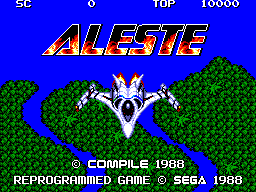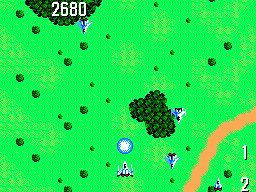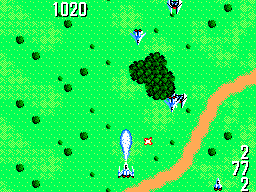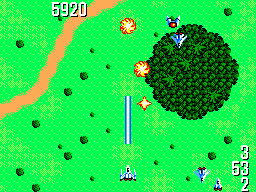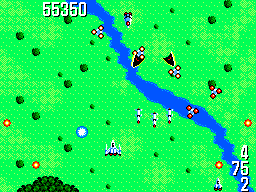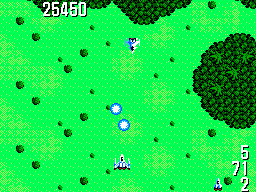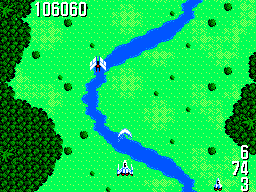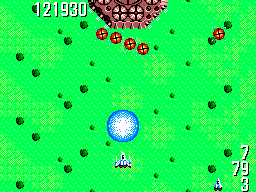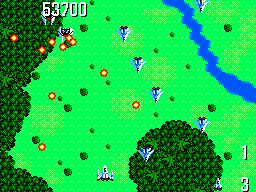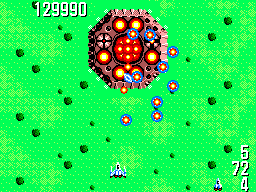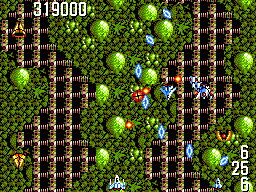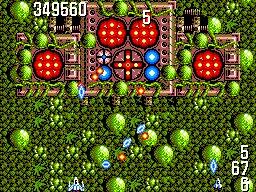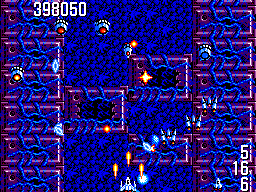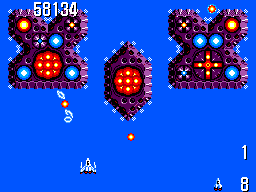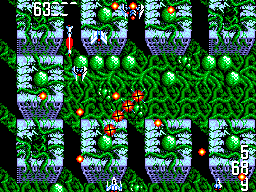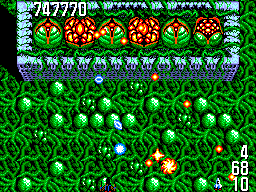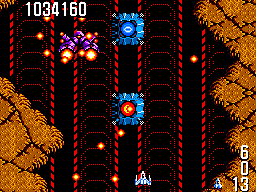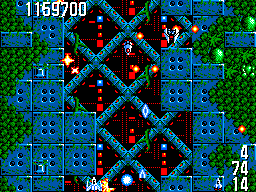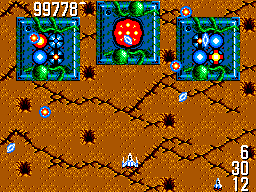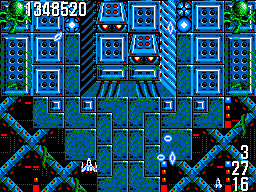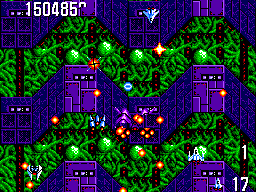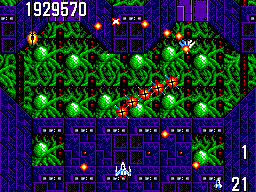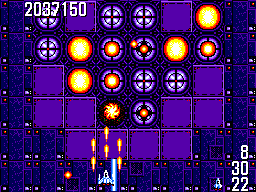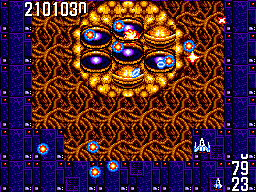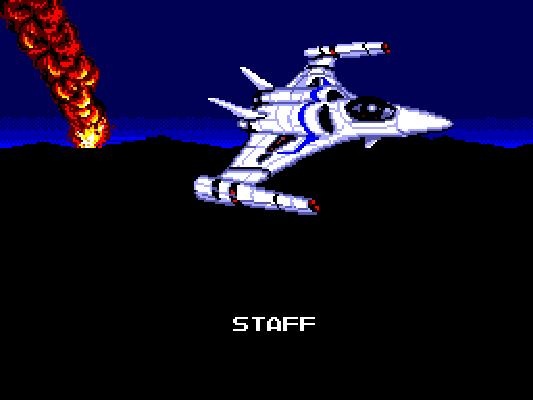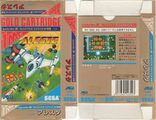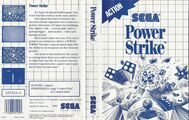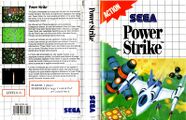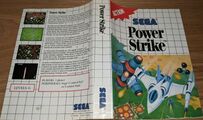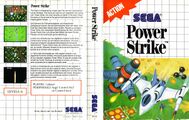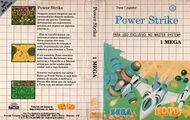Difference between revisions of "Power Strike"
From Sega Retro
(→Gameplay: map links) |
Hyperspeed34 (talk | contribs) |
||
| (7 intermediate revisions by 4 users not shown) | |||
| Line 4: | Line 4: | ||
| tab1=NTSC-U/PAL | | tab1=NTSC-U/PAL | ||
| tab2=NTSC-J | | tab2=NTSC-J | ||
| − | | publisher=[[Sega]] | + | | publisher={{company|[[Sega Enterprises, Ltd.]]|region=JP, EU}}, {{company|[[Sega of America]]|region=US}} |
| developer=[[Compile]] | | developer=[[Compile]] | ||
| + | | distributor={{company|[[Tonka]]|region=US}}, {{company|[[Tec Toy]]|region=BR}}, {{company|[[Korea Oacs]]|region=KR}} | ||
| system=[[Sega Master System]] | | system=[[Sega Master System]] | ||
| peripherals=[[FM Sound Unit]] | | peripherals=[[FM Sound Unit]] | ||
| Line 18: | Line 19: | ||
| sms_date_eu=1988 | | sms_date_eu=1988 | ||
| sms_code_eu=MK-5109-50 | | sms_code_eu=MK-5109-50 | ||
| − | | sms_date_uk=1988 | + | | sms_date_uk=1988-12{{fileref|BristolEveningPost UK 1988-12-30 Page 44.jpg}} |
| sms_code_uk=MK-5109-50 | | sms_code_uk=MK-5109-50 | ||
| sms_rrp_uk=24.99{{magref|raze|11|76}} | | sms_rrp_uk=24.99{{magref|raze|11|76}} | ||
| Line 26: | Line 27: | ||
| sms_date_mx=19xx | | sms_date_mx=19xx | ||
| sms_date_au=19xx | | sms_date_au=19xx | ||
| + | | sms_rrp_au=69.95{{magref|mz|5|48}} | ||
| sms_date_se=19xx | | sms_date_se=19xx | ||
}} | }} | ||
| otherformats={{NonSega|MSX}} | | otherformats={{NonSega|MSX}} | ||
}} | }} | ||
| − | '''''{{PAGENAME}}''''', known as '''''Aleste''''' (アレスタ) in Japan, is a shoot-'em-up by [[Compile]] released in 1988 by | + | '''''{{PAGENAME}}''''', known as '''''Aleste''''' (アレスタ) in Japan, is a shoot-'em-up by [[Compile]] released in 1988 by Sega for the [[Sega Master System]]. It is the first game in Compile's ''Aleste'' series of shoot-'em-ups. Compile released the game to the MSX computer in Japan. |
| − | In North America, ''Power Strike'' was initially only available through mail order from Sega, but it eventually had a limited retail release. While the MSX game received two sequels, Compile would take the franchise further on other platforms through 1994. Most ''Aleste'' games released outside Japan would use the ''Power Strike'' moniker, with a few exceptions (''[[MUSHA]]'', ''[[Robo Aleste]]'', the SNES game ''Space Megaforce''). The Master System game was followed by ''[[Power Strike II (Master System)|Power Strike II]]'' in 1993; this is an outlier in the series and was only released in Europe. | + | In North America, ''Power Strike'' was initially only available through mail order from Sega{{magref|teamsega|4|16}}, but it eventually had a limited retail release. While the MSX game received two sequels, Compile would take the franchise further on other platforms through 1994. Most ''Aleste'' games released outside Japan would use the ''Power Strike'' moniker, with a few exceptions (''[[MUSHA]]'', ''[[Robo Aleste]]'', the SNES game ''Space Megaforce''). The Master System game was followed by ''[[Power Strike II (Master System)|Power Strike II]]'' in 1993; this is an outlier in the series and was only released in Europe. |
==Story== | ==Story== | ||
| Line 232: | Line 234: | ||
| console=Master System | | console=Master System | ||
| region=BR | | region=BR | ||
| − | | | + | | cover=PowerStrike SMS BR cover.jpg |
| + | | cart=PowerStrike-SMS-BR-CArt.jpg | ||
| + | | manual=PowerStrike-SMS-BR-Manual.pdf | ||
}} | }} | ||
{{Scanbox | {{Scanbox | ||
Latest revision as of 03:47, 20 November 2024
| ||||||||||||||||||||||||||||||||||||||||||||||||||
| Power Strike | ||||||||||||||||||||||||||||||||||||||||||||||||||
|---|---|---|---|---|---|---|---|---|---|---|---|---|---|---|---|---|---|---|---|---|---|---|---|---|---|---|---|---|---|---|---|---|---|---|---|---|---|---|---|---|---|---|---|---|---|---|---|---|---|---|
| System(s): Sega Master System | ||||||||||||||||||||||||||||||||||||||||||||||||||
| Publisher: Sega Enterprises, Ltd. (JP, EU), Sega of America (US) | ||||||||||||||||||||||||||||||||||||||||||||||||||
| Developer: Compile | ||||||||||||||||||||||||||||||||||||||||||||||||||
| Distributor: Tonka (US), Tec Toy (BR), Korea Oacs (KR) | ||||||||||||||||||||||||||||||||||||||||||||||||||
| Peripherals supported: FM Sound Unit | ||||||||||||||||||||||||||||||||||||||||||||||||||
| Genre: Shooting[1], Action[2] | ||||||||||||||||||||||||||||||||||||||||||||||||||
| Number of players: 1 | ||||||||||||||||||||||||||||||||||||||||||||||||||
| ||||||||||||||||||||||||||||||||||||||||||||||||||
|
Power Strike, known as Aleste (アレスタ) in Japan, is a shoot-'em-up by Compile released in 1988 by Sega for the Sega Master System. It is the first game in Compile's Aleste series of shoot-'em-ups. Compile released the game to the MSX computer in Japan.
In North America, Power Strike was initially only available through mail order from Sega[7], but it eventually had a limited retail release. While the MSX game received two sequels, Compile would take the franchise further on other platforms through 1994. Most Aleste games released outside Japan would use the Power Strike moniker, with a few exceptions (MUSHA, Robo Aleste, the SNES game Space Megaforce). The Master System game was followed by Power Strike II in 1993; this is an outlier in the series and was only released in Europe.
Contents
Story
In Space Year 6180, the planet Rimar entrusts its environmental maintenance to the supercomputer DIA51. One day, while DIA51 is genetically engineering a new plant for oxygen synthesis, a massive earthquake occurs that causes DIA51 to malfunction and alter the DNA sequence of the plant.
A month later, DIA51 begins to go haywire, severing communication with the military base in which it is located, and the temperature of the planet begins to rise. The planetary defense forces learn that DIA51 is creating intelligent plant life to infect human brains, and they dispatch the advanced Aleste fighter to eliminate the DIA51.
Gameplay
The game is a vertically scrolling shooter. The player pilots the Aleste (or the Power Strike in the English localizations), which is moved in any direction with the D-Pad. The Aleste is equipped with a standard pulse beam that is fired with ![]() and a special weapon that is fired with
and a special weapon that is fired with ![]() . Either can be held down for continuous fire. Both weapons have unlimited ammunition and can be fired simultaneously. The standard weapon can be upgraded by collecting Power Chips. The special weapon can be switched or upgraded by picking up numbers corresponding to each weapon. All of the special weapons except the first, which is initially equipped, only last a certain duration and revert back to the starting special weapon once their timers run out.
. Either can be held down for continuous fire. Both weapons have unlimited ammunition and can be fired simultaneously. The standard weapon can be upgraded by collecting Power Chips. The special weapon can be switched or upgraded by picking up numbers corresponding to each weapon. All of the special weapons except the first, which is initially equipped, only last a certain duration and revert back to the starting special weapon once their timers run out.
The Aleste is destroyed if it takes damage from an enemy, costing the player a life. The ship respawns after a moment, but the player loses any power-up effects after losing a life. The game ends if the player runs out of lives, but it can be continued from the title screen as long as the player has continues remaining. The player gains an extra life at 20,000 and 100,000 points and then every 100,000 points after that.
Weapons
Items
Items are dropped by item carriers when they are destroyed and can then be collected by flying over them.
The Aleste is temporarily invincible after collecting an item.
| Power Chip | |
|---|---|
| Upgrades the attack speed and power of the standard pulse beam. The standard weapon eventually grows to two and then three parallel beams. Drops down when released from an item carrier. | |
| Special Weapon | |
| Changes the special weapon to one of the eight special weapons. Picking up a number of a weapon that is already equipped upgrades the weapon. Floats upward when released from an item carrier. |
Rounds
| Power Strike Takeoff | |
|---|---|
| Map: 1️⃣ | |
| Deep Forest | |
| Map: 1️⃣ | |
| Great River | |
| Map: 1️⃣ | |
| Mu-Plant | |
| Map: 1️⃣ | |
| Invaded | |
| Map: 1️⃣ | |
| HQ | |
| Map: 1️⃣ | |
Versions
Localised names
| Language | Localised Name | English Translation |
|---|---|---|
| English | Power Strike | Power Strike |
| English (US) | Power Strike | Power Strike |
| Japanese | アレスタ | Aleste |
Production credits
Magazine articles
- Main article: Power Strike/Magazine articles.
Physical scans
| Sega Retro Average | |||||||||||||||||||||||||||||||||||||||||||||||||||||||||||||||||||||||||||||||||||||||||
|---|---|---|---|---|---|---|---|---|---|---|---|---|---|---|---|---|---|---|---|---|---|---|---|---|---|---|---|---|---|---|---|---|---|---|---|---|---|---|---|---|---|---|---|---|---|---|---|---|---|---|---|---|---|---|---|---|---|---|---|---|---|---|---|---|---|---|---|---|---|---|---|---|---|---|---|---|---|---|---|---|---|---|---|---|---|---|---|---|---|
|
| 85 | |
|---|---|
| Based on 17 reviews | |
| Master System, SE |
|---|
|
| Master System, BR |
|---|
Technical information
ROM dump status
| System | Hash | Size | Build Date | Source | Comments | |||||||||
|---|---|---|---|---|---|---|---|---|---|---|---|---|---|---|
| ? |
|
128kB | Cartridge (EU/US) | |||||||||||
| ? |
|
128kB | Cartridge (JP) |
References
- ↑ 1.0 1.1 https://sega.jp/history/hard/mastersystem/software.html (Wayback Machine: 2019-12-31 02:27)
- ↑ File:PowerStrike SMS EU Box.jpg
- ↑ Computer Entertainer, "January 1989" (US; 1989-01-21), page 12
- ↑ File:BristolEveningPost UK 1988-12-30 Page 44.jpg
- ↑ Raze, "September 1991" (UK; 1991-07-25), page 76
- ↑ 6.0 6.1 Megazone, "June 1990" (AU; 1990-0x-xx), page 48
- ↑ Sega Challenge: The Team Sega Newsletter, "Fall 1988" (US; 1988-xx-xx), page 16
- ↑ File:Power Strike SMS credits.pdf
- ↑ Complete Guide to Consoles, "" (UK; 1989-10-16), page 66
- ↑ Complete Guide to Consoles, "" (UK; 1989-10-16), page 87
- ↑ Complete Guide to Consoles, "Volume IV" (UK; 1990-11-xx), page 104
- ↑ The Complete Guide to Sega, "" (UK; 1991-05-xx), page 59
- ↑ Console XS, "June/July 1992" (UK; 1992-04-23), page 143
- ↑ Game Mania, "May 1993" (UK; 1993-xx-xx), page 81
- ↑ Génération 4, "Décembre 1988" (FR; 1988-1x-xx), page 40
- ↑ Micromanía (segunda época), "Agosto 1990" (ES; 1990-0x-xx), page 34
- ↑ Mean Machines Sega, "October 1992" (UK; 1992-09-xx), page 135
- ↑ Power Play, "Ausgabe 5" (DE; 1988-05-24), page 87
- ↑ S: The Sega Magazine, "April 1990" (UK; 1990-03-01), page 21
- ↑ Sega Power, "October 1991" (UK; 1991-09-05), page 59
- ↑ Sega Pro, "March 1992" (UK; 1992-02-20), page 21
- ↑ Sega Pro, "July 1992" (UK; 1992-06-18), page 30
- ↑ Sega Pro, "April 1993" (UK; 1993-03-11), page 72
- ↑ Tilt, "Julliet/Août 1988" (FR; 1988-0x-xx), page 72
| Power Strike | |
|---|---|
|
Main page | Comparisons | Maps | Hidden content | Magazine articles | Reception | |
| Aleste/Power Strike games for Sega systems/published by Sega | |
|---|---|
| Power Strike (1988) | Power Strike II (1993) | |
| M.U.S.H.A. (1990) | |
| GG Aleste (1991) | Power Strike II (1993) | GG Aleste 3 (2020) | |
| Robo Aleste (1992) | |
| M.U.S.H.A. (2008) | |
| Aleste Collection (2020) | |
| Aleste-related media | |
| Aleste Collection: Music Album (2022) | |
- FM Sound Unit-compatible games
- 1 player games
- JP Master System games
- All JP games
- US Master System games
- All US games
- EU Master System games
- All EU games
- UK Master System games
- All UK games
- SE Master System games
- All SE games
- AU Master System games
- All AU games
- MX Master System games
- All MX games
- BR Master System games
- All BR games
- KR Master System games
- All KR games
- Master System games
- 1988 Master System games
- All 1988 games
- Master System shoot-'em-up games
- All shoot-'em-up games
- All games
- Old technical information
- Power Strike
- Aleste
- Game Gear Micro games

